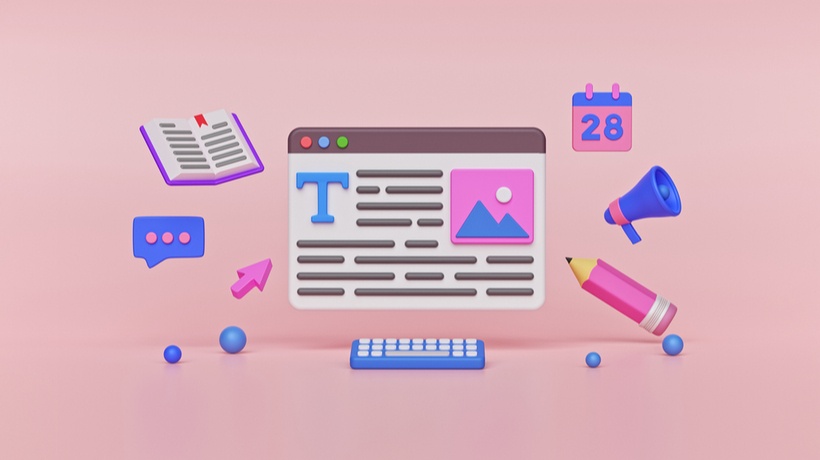How To Build Your Educator Portfolio Online
Creating your own educator portfolio allows you to display your competence as a teacher in both qualitative and quantitative ways. It allows you to showcase yourself as a teacher and educator much better than a resume can. It is also very advantageous when applying for jobs and promotions. As such, an educator portfolio can be much more productive for your teaching career than any resume.
Building an online teaching portfolio is even better because it saves you from carrying your materials everywhere or mailing them to each job listing. You can simply link your online portfolio website and that's it! So, how do you build your teaching portfolio and what are the areas that a teaching portfolio should cover?
Let us walk you through 10 helpful tips to get you started:
1. Look At Other Educator Portfolios
This is always the first thing you should do when building any portfolio. As a teacher, you should know that learning by example is one of the best ways of learning. Your peers can help give you an idea of what a teaching portfolio covers and what it should look like. Try to talk to your friends and colleagues and ask them if you can take a look at their portfolio websites. It is always best to look at the online teaching portfolios of educators who are in a similar discipline as you and who teach at the same level or have a similar level of experience. If you are a special education teacher at an elementary school with five years of experience or less, a college philosophy professor’s portfolio will not be of much use to you.
2. A Portfolio Is More Than A Resume
Your teaching portfolio is not just a resume. A resume is a simple description of your degrees, certifications, and experience. A teaching portfolio covers and evidences your teaching capabilities not just quantitatively but also qualitatively. It gives context for the evidence of your teaching skills. This includes not just a list of degrees and previous jobs and training, but a comprehensive look at why you teach, how you teach, and how effective your teaching is. Make your portfolio descriptive and personalized. Take the opportunity to present yourself not just as a job seeker but as an educator with passion.
3. Keep It Clean And Simple
Always make sure to keep it clean and simple. Overcrowded, cluttered educator portfolios are unappealing and hard to read. Keep the font consistent and simple. The font size should be readable and there should be adequate line and paragraph spacing. You should use white space to balance out the content of each page instead of cramming everything in one place. Make your educator portfolio comprehensive without using too much filler content. Everything you put into your teaching portfolio should add value to it and be constructive. If you are building an online portfolio website for your teaching portfolio, make sure to use templates that are sleek, minimalist, and easy on the eyes.
4. Always Include Your Teaching Philosophy
Your teaching philosophy or teaching statement is your take on pedagogy and education in the classroom and outside. This is the place where you can talk about why you are an educator and the kind of education you believe in. You can use some creativity and storytelling skills in this section. Talk about your instructional techniques and the philosophy behind those techniques. Talk about how your teaching plays out in and out of a classroom and what are the kinds of outcomes that you have achieved and seek to achieve. This is often one of the most crucial elements of your teaching portfolio.
5. Show, Don't Tell
Don’t tell us you are a good teacher, show us! Don’t just list out your certificates and achievements. This is a statement about your qualifications as a teacher, not your qualities. It can be a good idea to talk about your students and your experiences with them. Was there a particularly difficult student or a student who came from a troubled background? What was your experience with them? How did you overcome the challenges to teach them? Talk about the learning outcomes in each case and how you exemplified yourself as an excellent educator. This helps you in providing both evidence and context for your teaching experiences and skills. Once again, remember that your portfolio has to be more than your resume.
6. Format Matters
When it comes to an online teaching portfolio, format certainly matters. A website offers endless possibilities for multimedia additions that could jazz up your teaching portfolio. Make use of these features. You can add a short video profile or biography for yourself, add photographs of yourself, your students, or any workshops you have conducted, and more. Don’t limit yourself and make full use of the opportunities and functionality that modern technology provides. Creating a teaching portfolio that is both comprehensive and unique will help you stand out from the crowd.
7. Include Testimonials And Recommendations
Testimonials from students, parents, previous employers, or colleagues can be a very constructive and fruitful addition to your portfolio. While your prospective employer will likely ask for references anyway, include an additional section for testimonials on your teaching portfolio. A lot of times, when previous employers are contacted for references, they tend to give a neutral response for legal reasons. This is why getting recommendations on your portfolio is better. Recommendations give real evidence of your teaching ability and your capability to cultivate relationships with students and colleagues.
8. Showcase Your Growth
Show the ways in which you have grown. Your educator portfolio is a great way of illustrating your growth as an educator. Talk about the certifications you received or the workshops you attended after you started working. This shows that you are constantly looking for opportunities to learn and improve as a teacher. Talk about things that experience has taught you. Maybe you were not very good at online teaching or remote teaching early on in your career but have grown to manage them quite well now. Talk about the experiences that brought you to this point. Always remember that a teacher capable of learning as well as teaching is the biggest asset to any educational institution.
9. Keep Your Portfolio Current And Complete
Make sure you update your portfolio regularly to include all your latest certifications, promotions, and job postings. There is nothing more useless and potentially harmful than an online teaching portfolio that is outdated and/or incomplete. Your portfolio website is the first thing potential employers will look at and you could be missing a lot of job opportunities if your teaching portfolio is not current. You may think that if you have a steady job and are not currently looking, you can let things be and get away with not regularly updating your online portfolio website. However, you may be missing out on some excellent mentorship or public speaking opportunities that may have come your way. Never get lazy when it comes to your educator portfolio!
10. Create A Personal Portfolio Website
Creating a personalized online portfolio website gives you the agency to format, edit, and build your portfolio the way you like. This also enables you to show prospective employers your portfolio by simply forwarding a single link instead of having to forward all the materials separately. A website supports multiple formats, including images, audio, and video. This helps you in creating a comprehensive portfolio without much hassle. You can also add a link to your portfolio website on your LinkedIn and other social media as well as on your faculty page for maximum reach and exposure.
Key Takeaways
Creating a good teaching portfolio is an absolutely crucial part of building your career as an educator. It is not always an easy thing to explain why and how you are a good educator because a lot of skills that are intrinsic to good educators are not quantifiable. Soft skills, the ability to listen, the ability to ensure that no student falls behind, and dealing with the complicated backgrounds that many students come from are not skills that can be described simply. This is where a good educator portfolio comes in. We hope these tips will help you figure out a good place to start building or editing your teaching portfolio online!








